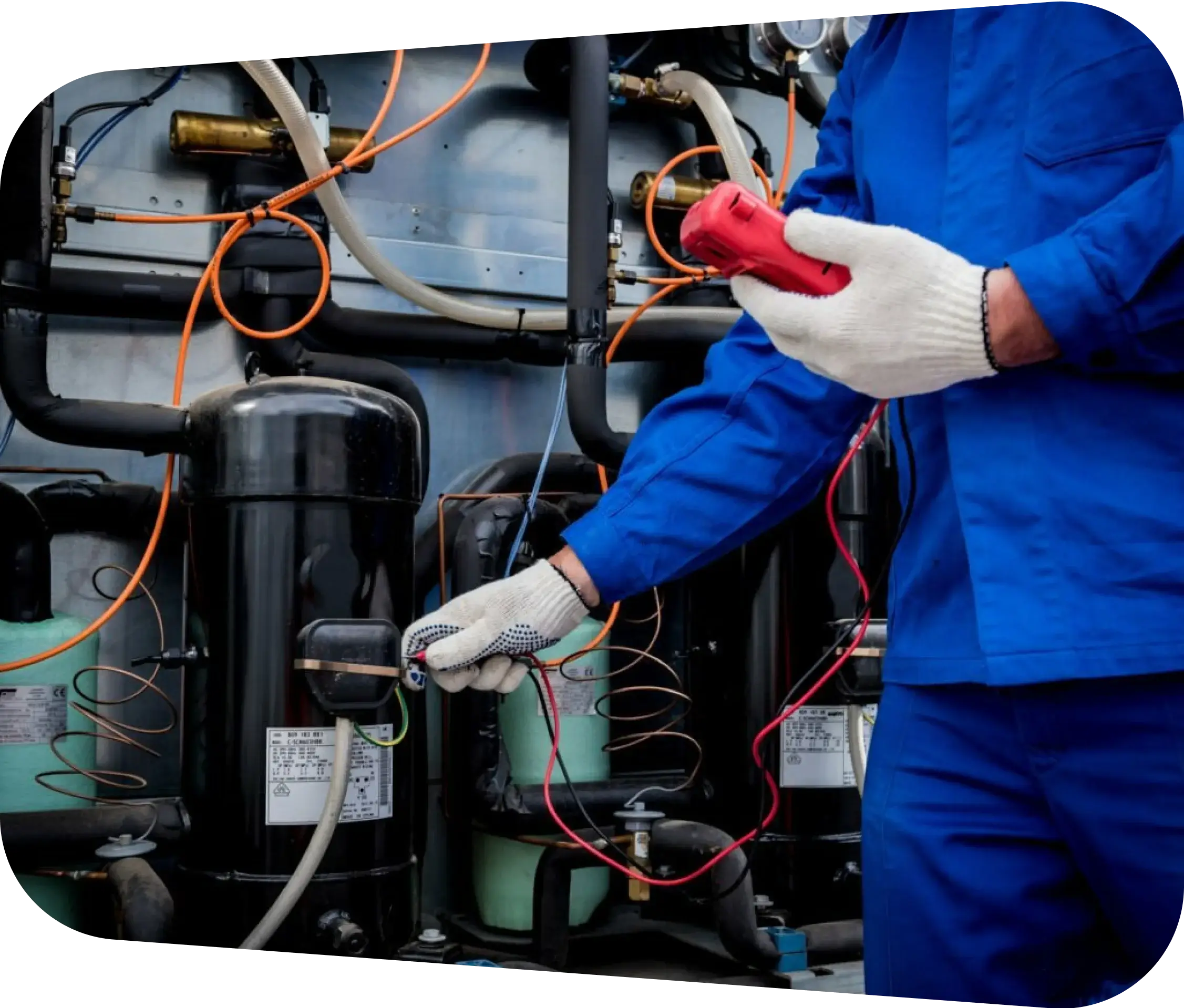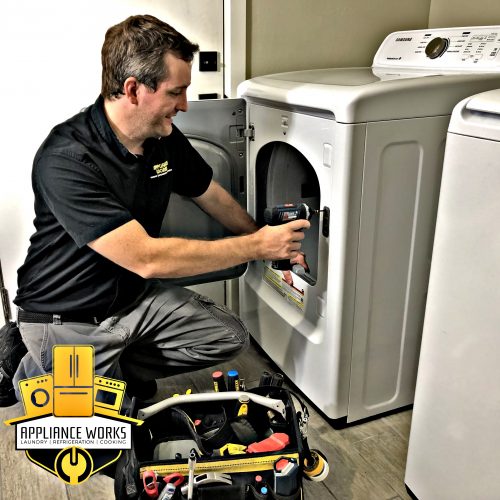The Ultimate Overview to DIY Appliance Repair Techniques
From fridges to dishwashing machines, comprehending exactly how to fix and fix these tools can conserve you time and cash. Are you prepared to find crucial strategies that will empower you to handle repairs confidently?
Understanding Common Device Troubles
When you count on your home devices, it can be annoying when they unexpectedly stop functioning or act up. Comprehending typical device troubles can assist you troubleshoot concerns successfully.
If your oven isn't home heating, malfunctioning elements or thermostat concerns could be to condemn,. Dishwashers frequently experience problems with water drainage, so make certain the filter is tidy and the drainpipe hose pipe isn't kinked.
Additionally, listen for unusual audios; they often suggest mechanical problems. By identifying these indications, you can conserve time and potentially stay clear of expensive repair services. A little knowledge goes a lengthy method in keeping your home appliances, so remain informed to keep every little thing running smoothly.
Important Devices for Do It Yourself Repairs
Before diving right into do it yourself device repair work, it is very important to gather the right tools to ensure the procedure goes efficiently. Start with an excellent set of screwdrivers, including both flathead and Phillips, as they're crucial for opening most home appliances. You'll also want a pair of pliers for grasping and turning cords or small components.
Don't forget a multimeter; it helps you examination electrical elements and identify issues successfully. An outlet collection is convenient for loosening or tightening bolts, while an utility knife can be beneficial for reducing cords or opening up product packaging.
Ultimately, take into consideration having a flashlight on hand to illuminate dark spaces inside your appliances. With these vital devices, you'll be well-appointed to take on numerous fixings, conserving both money and time. So, collect your gear and get ready to roll up your sleeves!
Security First: Preventative Measures to Take
Prior to you begin any appliance repair, it's important to focus on safety. Ensure you use personal protective equipment, separate the power resource, and maintain your workspace organized. These simple preventative measures can aid stop crashes and assure a smoother fixing procedure.

Individual Protective Equipment
Safety gear is a crucial part of any kind of do it yourself appliance repair work job. You must constantly use security goggles to secure your eyes from dust and debris. A durable set of gloves will protect your hands from harmful products and sharp edges. Think about utilizing a mask if you're managing chemicals or dirt, guaranteeing you take a breath securely while working. Steel-toed boots are also a smart choice, particularly when raising heavy appliances. Do not neglect to use long sleeves and trousers to safeguard your skin from prospective injuries. By prioritizing individual safety devices, you'll significantly decrease the risk of injuries and accidents. Keep in mind, being prepared with the ideal gear maintains you risk-free and concentrated on finishing your repair service effectively.
Power Resource Disconnection
To ensure a risk-free Do it yourself device repair work, detaching the power source is essential. This easy step protects against electric shocks and guarantees that you can focus on the repair work without fretting regarding unexpected activation. As soon as you're confident that the power is disconnected, you can confidently proceed with your repair work, understanding you've taken the required safety measures to secure on your own.
Job Location Company
An efficient work location can make all the difference in your DIY appliance fixing job. Beginning by clearing your work space of clutter to stop accidents and distractions. A clean space not only enhances efficiency however also maintains you secure while you function on your appliance repair service.
Step-by-Step Overview for Fridge Services
When your refrigerator begins acting up, it can be irritating, yet tackling the issue on your own can save you time and money. Initially, disconnect the refrigerator to guarantee safety. Check for typical concerns like temperature level variations or uncommon sounds. Evaluate the thermostat setups; they might be set too high if it's not cooling. Next, clean the condenser coils, which often gather dirt and particles. For a loud refrigerator, inspect the follower and confirm it's not blocked.
If there's water pooling inside, inspect the door seals for damages or dust, and tidy them if necessary. For ice buildup, clear the defrost drain. Connect the refrigerator back in and monitor it for a few hours once you have actually resolved the issue. If the trouble lingers, you may need to change a faulty component, like the compressor or follower motor. Keep in mind, don't hesitate to seek advice from the handbook or seek specialist assistance if required.
Repairing Washing Equipment Problems
Similar to refrigerators, cleaning machines can present their very own collection of challenges, however many issues can be solved with a little bit of troubleshooting. If your machine won't start, inspect the power cable and validate it's plugged in. Next, check the door lock; a defective latch can protect against the cycle from beginning. If you notice unusual sounds throughout procedure, it may be due to international objects stuck in the drum or the look at more info drainpipe pump.
If your clothes aren't obtaining tidy, consider the water level and detergent type; using excessive detergent can create excess suds, impacting performance. For leakages, check out the tubes for cracks or loosened links. Tightening these can usually address the trouble. Routine maintenance, like cleaning up the filter, can avoid numerous issues from arising. Remember, a little troubleshooting goes a long means in keeping your washing machine running smoothly.
Repairing Stoves and Ranges
Just how can you troubleshoot usual issues with your stove or cooktop? Start by examining the power supply.
If your oven isn't home heating, examine the temperature level settings and validate the door seals firmly. A malfunctioning home heating aspect can likewise be the wrongdoer; you may require to replace it if it's damaged.
For uneven food preparation, rotate your pans and consider utilizing a stove thermometer to confirm exact temperature levels. If you listen to uncommon noises or odor gas, transform off the appliance promptly and consult an expert. By complying with these actions, you can determine and fix numerous usual oven and range problems effectively.
Repairing Dish Washers Facilitated
When your dishwashing machine starts acting up, it can be discouraging, yet resolving usual concerns isn't as hard as it seems. You'll learn step-by-step troubleshooting methods that will help you pinpoint the problem, together with the essential tools you'll need to deal with repair services on your own. Let's make fixing your dishwasher a wind!
Typical Dish Washer Concerns
While dish washers are made to make your life less complicated, they can occasionally run right into common problems that leave you feeling frustrated. One frequent trouble is inadequate cleansing performance; this typically happens because of stopped up spray arms or unclean filters. You could likewise see water pooling near the bottom, which can suggest a faulty drainpipe or a kinked pipe. It could be an easy issue with the latch mechanism or door seal if your dish washer's door will not lock. Additionally, unusual sounds can signify loose parts or damaged parts. Lastly, if you smell something weird, it might be time to look for food particles or a malfunctioning motor. Resolving these issues early can conserve you time and hassle in the future (Dependable Appliance For SubZero Freezer Repair).

Detailed Troubleshooting
Prior to diving into repair work, it's essential to recognize the particular problem your dishwasher is facing. If it's not cleansing correctly, Start by checking. Examine the spray arms for clogs and assurance they rotate freely. If it's leaking, analyze door seals and tubes for any kind of damage. For odd sounds, pay attention very closely throughout cycles; foreign things could be embeded the filter or impeller. If your dish washer won't start, check the power supply have a peek at this website and door latch. Don't fail to remember to consult your customer guidebook for repairing tips details to your model. By systematically addressing each possible issue, you can identify the issue and take the needed actions to fix it, making your dishwasher feature like new once again.
Necessary Repair Work Tools
Having the right devices available can make all the distinction when repairing your dishwasher. Start with a screwdriver collection, as you'll commonly need both Phillips and flathead options. A multimeter's essential for detecting electric issues, while pliers can aid you hold and manipulate numerous parts. Don't forget a pail or towels for any type of water spills during repairs.
You could also desire a degree to guarantee your dishwashing machine's correctly lined up. With these essential tools, you'll be well-appointed to tackle any dishwashing machine fixing challenge that comes your method.
Regularly Asked Questions
Exactly how Do I Establish if an Appliance Deserves Repairing?
To figure out if a device's worth fixing, consider its age, repair expenses, and present worth. You may desire to spend in a brand-new design rather - Emergency Sub-Zero Repair Dependable Refrigeration & Appliance Repair Service. if repairs exceed half the substitute directory expense.
Can I Discover Replacement Parts In Your Area for My Device?
Yes, you can often locate substitute components in your area for your appliance. Check equipment stores, appliance repair stores, or regional classifieds. Don't fail to remember to bring the model number to ensure you get the proper component!
What Common Mistakes Should I Avoid When Fixing Home Appliances?
When repairing devices, prevent hurrying with diagnostics, disregarding safety precautions, or making use of wrong tools. Do not avoid reviewing handbooks or watching tutorials; they provide crucial assistance. Be patient and detailed to ensure effective repair work and protect against additional damages.
For how long Does a Typical Do It Yourself Appliance Fixing Take?
A common do it yourself appliance repair service typically takes one to 3 hours, depending on the complexity. You'll wish to collect your devices and materials first, and comply with directions meticulously to prevent unneeded hold-ups.
Are There Any Kind Of Guarantees for Do It Yourself Appliance Repair Works?
When you take on do it yourself appliance repair work, guarantees usually do not cover your job. Some makers may honor warranties for components you change. Constantly examine your appliance's guarantee terms before starting any type of repair services to stay clear of issues.
Before diving into DIY appliance repair work, it's essential to gather the right devices to assure the procedure goes efficiently.Prior to you begin any kind of device fixing, it's important to prioritize safety.To ensure a risk-free Do it yourself home appliance repair service, detaching the power source is vital.An efficient work area can make all the difference in your DIY home appliance repair work job. Always check your appliance's service warranty terms prior to beginning any type of repair work to prevent concerns.